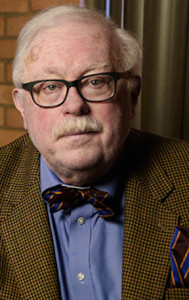Some years ago the poet Dana Gioia published a piece on “The Catholic Writer Today.” His argument was that Catholic fiction has declined since the golden days of Flannery O’Connor, Walker Percy, and other major figures, and that despite being the nation’s largest religious group, the presence of Catholics in the fine arts was almost nonexistent. Others, such as Paul Elie, sounded the same note, calling the contemporary place of the novel of faith “something between a dead language and a hangover.” Not all were convinced. Gregory Wolfe, for example, has argued that religious fiction is alive and well if you put aside rose-tinted nostalgia and know where to look.
But that debate addressed only one side of the literary world. The other, arguably as important, was that of non-fiction: history, criticism, philosophy, commentary, and the sciences, all of which were subjects of a specifically Catholic culture during the same time Gioia identified as a golden age of Catholic fiction. If Catholic fiction remains a still, small voice, Catholic nonfiction is a whisper, and that should equally be of concern.
For Catholics, reality is comprehensible through reason, and any subject can be studied to reveal eternal truths about the human condition. Moreover, these truths can be discussed in an open public square with anyone of good faith. Kevin Starr describes how that works in a useful broadside published by the redoubtable Wiseblood Books: The Lost World: American Catholic Non-Fiction at Midcentury.
There was a time where Catholics were influential figures across a range of genres in a secular world. Moreover, at midcentury, Starr, former Librarian for California, argues that “the plenitude of this nonfiction helped create the golden age of belletristic writing.”
The decline of non-fiction has many causes. Most people do not read much, if anything, anymore. Then, contemporary liberalism disdains any strong notion of the truth or the common good. Even its former bulwark, the language of rights, now has become largely a weapon to force a preferred agenda, as the recent debates over religious freedom attest.

Your race, orientation, or gender now define your principles: your motives become more important than your arguments. In this world, Catholics are reduced to simply another interest group and they cannot, for example, be enunciating ethical principles available to all of good faith – or a historical perspective that is informed by faith but open to all. Few have escaped this trap of liberal ideology.
Starr outlines the cultural moment at midcentury, at which point American Catholics had gained a strong enough of a foothold in the nation to become a potent cultural presence, but before the Second Vatican Council. He begins the account of this cultural moment in late nineteenth century England with John Henry Newman, G.K. Chesterton, and Hilaire Belloc, who were equally influential in the United States. British authors such as Fr. Vincent McNabb and Monsignor Ronald Knox continued to have significant American sales into the post-war period. Native–born Catholics, such as the inimitable Orestes Brownson, also contributed to the tradition.
And throughout the early decades of the twentieth century Catholic publishing houses and magazines were founded. But more importantly, these writers convinced secular publishing houses that Catholic books could sell. Thus, Doubleday launched its Image paperback series of Catholic classics in 1954, something that is inconceivable today. Consider its list: Chesterton, Christopher Dawson, and St. Francis de Sales’ Introduction to the Devout Life (!). And as Starr notes, secular college campuses permitted Catholicism to a greater degree than previously to enter academic intellectual life. For example, the great Catholic historian Carleton J. Hayes was president of the American Historical Association in 1945 and a year later was awarded Notre Dame’s Laetare Medal. (You only need look to this year’s recipients of that award to see how Catholic culture has suffered in the interim.)
It’s easy to overemphasize the vigor of this culture, and by portraying its variety I do not think Starr is arguing for some kind of return to that era, which is in any event not possible. He reminds us that this period was in some respects “a time of theological indecision and even confusion, [but] was not devoid of multiple levels of commentary, ranging from the popular to the profound, that created a force field for Catholic novelists and poets to absorb from their very environment the color, context, profundities, and dissonances of the American Catholic experience.”
Starr’s role rather is primarily that of an historian, and for that he should be commended for reminding us of this aspect of Catholic culture. Arguably, Catholics of the 1940s, 1950s, and 1960s were more exposed to non-fiction writings of all kinds, including spiritual writings, as a natural part of being “Catholic” than the authors, great as they are, being lauded by Gioia and Elie.
But there is a contemporary lesson in Starr’s work. Catholics must support those engaging culture from a perspective of faith but in language open to all. Writers like New York Times columnist Ross Douthat and scholars like Princeton’s Robert George come to mind. Moreover, Catholics must look to enrich other cultural forms – movies, television, the Internet – since that is now the world most of us inhabit more fully than the books and magazines Starr profiles. A new cultural moment is upon us. Looking backward will perhaps help us move forward.















